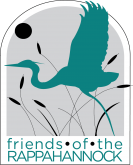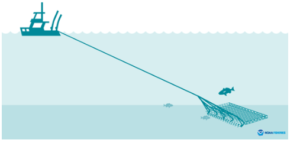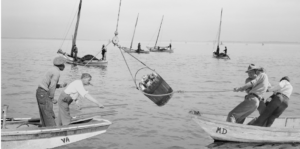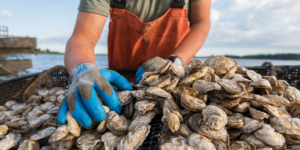 The Chesapeake Bay, the largest estuary in the United States, has a rich history filled with natural beauty and conflict. One such conflict was the Chesapeake Bay Oyster Wars, a destructive struggle for control over the region’s oyster beds that took place in the late 19th and early 20th centuries. These wars pitted watermen, who made their living harvesting oysters, against each other, big businesses, and even the state government, which attempted to regulate the industry. While it is hard to believe that people would create a hotbed of conflict over a mollusk, that is exactly what happened during the Chesapeake Bay Oyster Wars.
The Chesapeake Bay, the largest estuary in the United States, has a rich history filled with natural beauty and conflict. One such conflict was the Chesapeake Bay Oyster Wars, a destructive struggle for control over the region’s oyster beds that took place in the late 19th and early 20th centuries. These wars pitted watermen, who made their living harvesting oysters, against each other, big businesses, and even the state government, which attempted to regulate the industry. While it is hard to believe that people would create a hotbed of conflict over a mollusk, that is exactly what happened during the Chesapeake Bay Oyster Wars.
Prior to the colonization of the Americas, Native Americans had eaten oysters from the Chesapeake Bay for thousands of years. However, itwas not just the oyster body that they were interested in. After consuming the inside, Native Americans would use oyster shells to make tools, jewelry, and other implements. This meant the shells were useful enough to be traded with other tribes. Archaeological evidence suggests that oyster shells from the Chesapeake Bay were found in Native American settlements along the Pacific Coast dating back as far as 2,000 years ago. This suggests that trade networks between the two regions were established long before European contact.
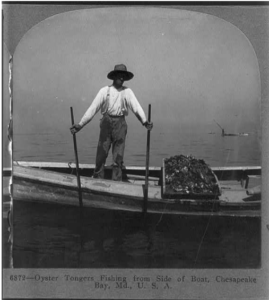
When European settlers arrived in the 17th century, they began harvesting the Bay’s oysters at a more constant rate, but due to the fact that oysters cannot be preserved for long once removed from their shells, they were typically eaten locally. This all changed in the 19th century with advancements in transportation and food preservation which made it possible to scan oysters and send them further west. Cities that were located on the coast, like Baltimore, became hotspots for oyster canning production and were able to send oysters to many cities across the Midwest. The Chesapeake Bay’s abundance of oysters made them inexpensive and therefore, very popular, which increased demand for the oysters all around the nation.
As the oyster industry expanded and the demand for them increased, large companies were looking for more efficient ways to harvest oysters. Up until then, oysters were harvested through tonging, a gentle approach that involved using long-handled tongs to pluck individual oysters from the ocean floor. This method was time-consuming and big businesses were looking for faster and more efficient ways to obtain oysters, therefore dredging was created. Dredging used less manual labor and involved dragging a metal basket along the ocean floor, scooping up everything in its path, including oysters, but it was very damaging to the seabed. As the oyster industry continued to grow, tensions between tongers and dredgers began to escalate. Dredgers accused tongers of poaching oysters from areas that had been dredged, while tongers accused dredgers of destroying oyster beds and damaging the ecosystem. These two groups would engage in acts of sabotage and destruction to gain any advantage they could in the oyster industry.
In an effort to reduce tensions between dredgers and tongers, the government put a variety of measures into place to try and manage the oyster industry. One of the primary methods used by
the government was the implementation of oyster management regulations. These regulations included restrictions on the size and number of oysters that could be harvested, licensing requirements for oyster harvesters, and the establishment of oyster sanctuaries where harvesting was prohibited. In addition, the government established oyster patrols, which were responsible for enforcing oyster management regulations and preventing illegal harvesting actions. These patrols were often made up of law enforcement officers and were given the power to seize illegal oyster harvests and arrest violators. The government also encouraged cooperation and communication between dredgers and tongers. For example, the Maryland Oyster Navy which was established in 1868, required dredgers and tongers work together and share oyster beds in a cooperative system. The government’s efforts to manage the oyster industry were at first successful, but people began to find ways around the law.
People that engaged in the illegal harvesting of oysters from public or private oyster beds were known as oyster pirates. Although there is “pirate” in the name, oyster pirates were nothing like the swashbuckling buccaneers that can be seen in movies. These pirates would often sneak into oyster beds at night and harvest oysters without permission or proper permits, using illegal equipment such as dredgers or rakes. They would then sell the oysters at market the next morning, where they could fetch high prices.
The oyster wars in the Chesapeake Bay ended due to multiple factors. The Maryland Oyster Navy’s use of advanced technology, such as faster boats, sophisticated weapons, and communications equipment, made it harder for oyster pirates to avoid capture. Moreover, Maryland began regulating the oyster industry in the early 1900s, limiting the number, size, and age of legally harvested oysters to protect the population from depletion and reduce incentives for piracy. Additionally, changes in the economy and society reduced the demand for oysters, leading many pirates to seek other sources of income.
By the early 20th century, the oyster wars had largely come to an end, and the Maryland Oyster Navy was disbanded in 1960. Today, the Chesapeake Bay remains an important source of oysters and other seafood, and efforts continue to protect and sustainably manage the bay’s resources.
Guest Blog Post written by Ella Gould from St. Margaret’s School in 2023
